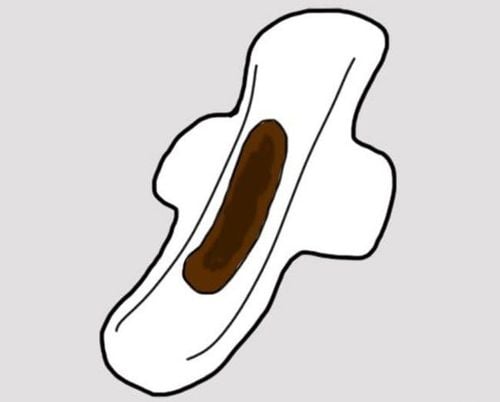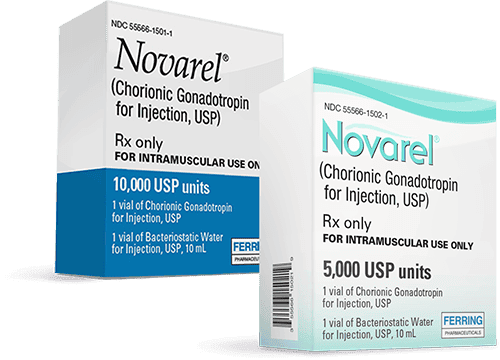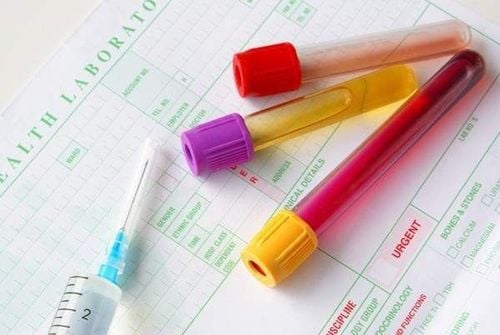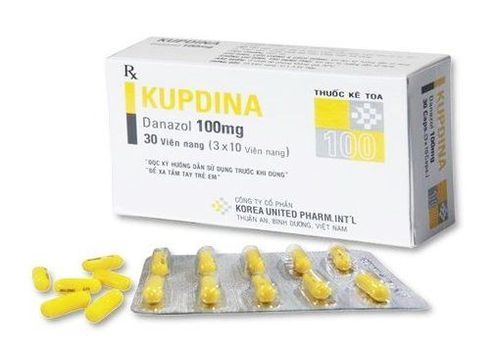This is an automatically translated article.
Endometriosis leads to the growth of abnormal cells in the lining of the uterus and outside of the organs. This condition affects 1 in 10 women worldwide, between the ages of 15 and 49, causing menstrual irregularities and consequences that can include infertility. However, IVF is indicated to support pregnancy aspirations for women with endometriosis.
1. How does endometriosis affect fertility?
Endometriosis is a disorder of the uterus that often causes menstrual cramps in a woman during her cycle because tissue similar to the tissue normally located inside the uterus - the endometrium - grows outside the uterus. bow. Endometriosis most commonly involves the ovaries (called ovarian endometriosis), the fallopian tubes, and the tissue lining the pelvis. Sometimes endometrial tissue can spread beyond the pelvic organs.
In the pathophysiology of endometriosis, endometrial-like tissue behaves like endometrial tissue—that is, they also cycle with each menstrual period to thicken, rupture, and bleed. However, since this tissue has no way of exiting the body, it becomes trapped. When endometriosis involves the ovaries, cysts called ovarian endometriomas can form. The surrounding tissue can become irritated, eventually forming scar tissue and adhesions - bands of abnormal fibrous tissue that can cause pelvic tissues and organs to stick together.
Because of this, endometriosis can be painful - sometimes extremely painful - especially during menstruation. Problems affecting fertility can also occur. Fortunately, effective infertility treatments are available to assist in these cases, such as by IVF.
Staging system to evaluate endometriosis , thereby guiding intervention:
Endometriosis stage I (minimal disease): There is evidence of some endometriosis tissue, no visible scar tissue; Stage II endometriosis (mild disease): More endometriosis implants but no scar tissue; Stage III endometriosis (moderate disease): There is quite a bit of endometriotic tissue in the abdomen, which may be deep and may produce cysts containing the endometrium (chocolate cysts, or cysts). endometrium) in the ovary. There may be scar tissue around the fallopian tubes or ovaries; Stage IV endometriosis (severe): Lots of endometrium detected, possibly large endometrial cysts in the ovary, possibly scar tissue between the uterus and rectum (segment of the uterus). end of the intestine) and around the ovaries or fallopian tubes.
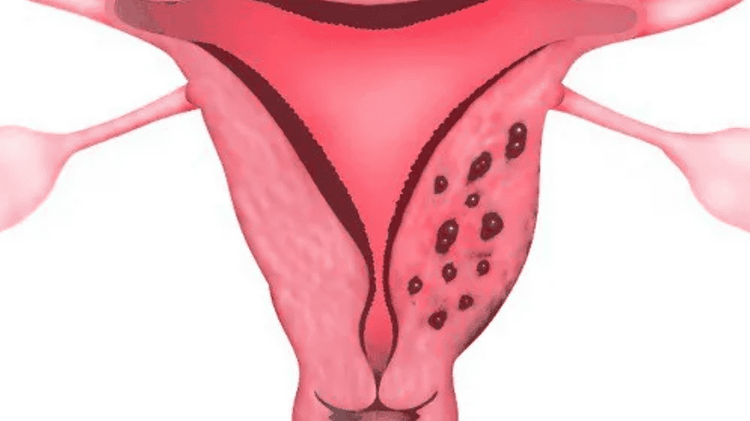
Lạc nội mạc tử cung phổ biến nhất là có liên quan đến buồng trứng
Based on the above levels, endometriosis can affect fertility. Between 35% and 50% of women with this condition have difficulty conceiving. Endometriosis can cause infertility by three mechanisms:
Fallopian tube blockage: abnormal cell growth can block the fallopian tube and prevent the egg from passing normally during ovulation. Ovarian Cysts: Endometriosis can cause cysts that block the passage of an egg and can destroy the ovaries. Pelvic Infection: Even in the absence of a cyst or obstruction, pelvic inflammatory disease caused by endometriosis cells along with the presence of bacteria can lead to infertility. As such, endometriosis is associated with an increased risk of difficulty becoming pregnant or infertility. Studies have even shown that the amount of endometriosis seen at the time of laparoscopy has the potential to predict future reproductive function.
2. Surgical treatment of endometriosis and fertility
Women with stage I and II endometriosis can get pregnant on their own. However, pregnancy rates may improve if stage I or II endometriosis is surgically removed; however, some other data suggests this doesn't help. Accordingly, when women are young (under 35 years old), laparoscopic removal of visible endometriosis masses to increase the likelihood of pregnancy is indicated. If a woman is 35 years of age or older, other fertility treatments, such as in vitro fertilization, are recommended instead of laparoscopy.
If endometriosis is stage III or IV, pregnancy rates are significantly higher after surgical removal of scar tissue or large endometrial cysts. If no pregnancy occurs within 6 months of surgical treatment for endometriosis, other fertility treatments should be discussed, including indications for in vitro fertilization.
Unfortunately, some women with endometriosis may have the cyst return. If the cyst needs to be removed more than once, the scar tissue or damage left behind can remove an egg from the ovary and make it more difficult to get pregnant.
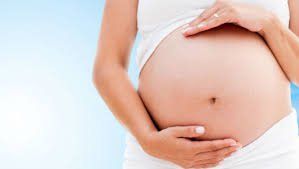
Phụ nữ bị lạc nội mạc tử cung giai đoạn I và II có thể tự mang thai
3. Indications and treatment for infertility related to endometriosis
Before starting any fertility treatment, a complete fertility assessment should be performed, on both women and men. This includes testing the woman's hormones and blood as well as checking her partner's sperm count. If the cause of difficulty getting pregnant is attributed to endometriosis, the medical treatment that will be prescribed depends on the stage of the patient's endometriosis:
3.1 STAGE I -II To improve fertility, clomiphene citrate, an aid in fertility, is taken for 5 days immediately after menstruation begins. At the time an egg is released from the ovary (i.e. ovulation), the man will provide a sperm sample by masturbating into a sterile cup. The sperm is taken to a fertility lab and processed.
Then, the woman comes to the lab at the time of ovulation to have the sperm inserted into the uterus using a thin tube. This is done during a speculum exam and feels similar to a Pap smear test.
If this treatment is unsuccessful after three months or longer, the next step is to use fertility drugs with or with in vitro fertilization indicated.
3.2 STAGE III-IV If a woman has not become pregnant within 6 to 12 months of surgical treatment for moderate to severe endometriosis, IVF is indicated. In some cases, where the fallopian tubes are blocked and/or scar tissue is very severe, the doctor may recommend IVF treatment in the first place.
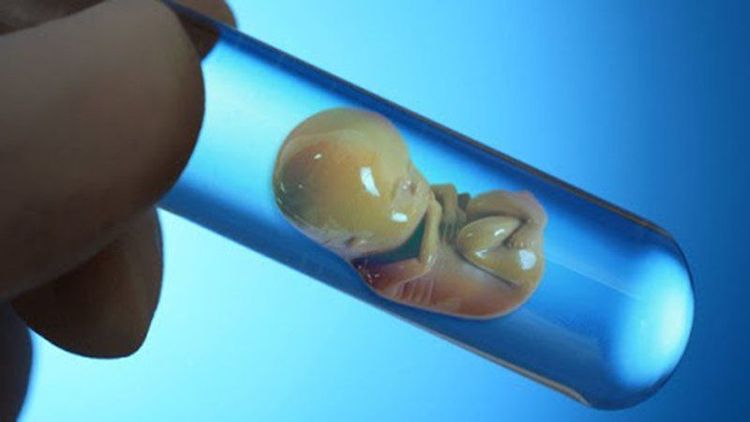
Khả năng có thai từ một lần thử thụ tinh trong ống nghiệm dao động từ 50% trở lên đối với phụ nữ ở độ tuổi 20
4. In vitro fertilization for endometriosis
Before starting this method, the doctor will explain the chances of success as well as the influencing factors, based on the woman's age and hormone testing.
This treatment requires the woman to inject some fertility drugs to make more eggs develop in the ovaries in fluid sacs called follicles. These cysts are monitored with blood tests and ultrasound. Once the follicles are a certain size, the egg is ready to be removed from the ovary using an ultrasound-guided needle, which is passed through the vaginal wall into the ovary.
In the next step, the eggs are placed in plates with sperm in a fertility laboratory. Most will fertilize and develop into embryos. A few days after the eggs are removed from the ovaries, the woman returns to the fertility clinic and one to several embryos are placed into the uterus with a thin tube, through the cervix, during a beak exam. duck.
Chances of getting pregnant from one IVF attempt range from 50% or more for women in their 20s, only 10% for women in their 40s.
In short, endometriosis Bowel is one of the causes of infertility in women. However, indications for IVF to support pregnancy in these cases are considered according to each stage of the disease to achieve optimal results.
Customers can come to the Center for Reproductive Support - Vinmec International General Hospital. This is the leading center in Vietnam, which has developed and applied a comprehensive medical examination and treatment process, combining both gynecology and obstetrics and gynecology to provide the optimal method for each patient's case.
Advantages when customers choose Vinmec fertility center:
Equipped with modern equipment, clean air system according to international standards to ensure lab quality, single cabinet system to optimize quality embryo, improving the success rate for each cycle of artificial insemination. Implement most advanced assisted reproductive techniques in the world: ICSI (injection of sperm into the oocyte cytoplasm); support embryo escape membrane; Reproductive reserve: embryo freezing, sperm freezing, oocyte freezing to help customers take the initiative in giving birth at will, transferring embryos on day 5, minimizing pregnancy; male infertility techniques (PESA, MESA, TEFNA, TESE) Besides advanced reproductive support methods, a team of excellent doctors in the country and the world, with prestige and long-term experience in the field of infertility .
Please dial HOTLINE for more information or register for an appointment HERE. Download MyVinmec app to make appointments faster and to manage your bookings easily.




